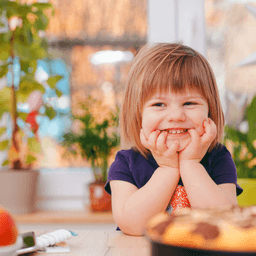5 components to transform behaviors
In a recent webinar on challenging behaviors, we were joined by the President and CEO of Together We Grow! Prerna Richards offered advice on how to transform challenging behaviors in the classroom. Prerna walked us through the five basic needs all children require to thrive, and the role we play as educators to ensure those needs are being met in the early years. She shared strategies on how to engage in intentional positive guidance and responsive interactions with young children, and how this helps foster relationships built on trust. She also walked us through how to manage stress and overwhelm in a busy environment.
Early childhood educators regularly run into children exhibiting challenging behaviors, and we need to learn how to manage or redirect them at the moment they begin. I have five strategies that tie together to transform these behaviors.
1) Five basic needs for children to thrive
Children’s five basic needs are:
- To be seen. In order for this to happen, the adult needs to be fully present.
- To be heard. Give children structured choices. Choices equal voices and give them a chance to express their needs.
- To be understood. For a child to be understood, we have to ask questions and for clarification. Let them explain how they are feeling.
- To be accepted. Accept children for who they are rather than trying to change them.
- To be loved. Unconditionally- not based on performance! Authentic love is to love them for who they are and the potential you see inside of them.
We all have emotional banks. When our emotional needs are met, our emotional bank is full. When it is not full we are emotional, dysregulated, etc. If we want children to succeed in our programs, we have to help fill their emotional banks by ensuring their basic needs are met.
2) Transforming challenging behaviors with trust
Trust is an emotion that has to be felt by both the child and the adult. Be authentic and vulnerable with children to develop trust. We are not the experts calling the shots. When we allow ourselves to be imperfect in the learning space, we allow children to be themselves. We accept them for who they are.
Some of us put so much pressure on ourselves that we don’t take risks, but we should encourage risk-taking in children. Allow space for safe risks where children do not feel pressure to be perfect.
Your vocabulary also matters. For example, saying you have not mastered something “yet” allows space for improvement and building confidence.
Empathy and trust are connected. Empathy is an emotion that you feel that the other person understands you. These both need to be role-modelled to children.
3) Provide intentional positive guidance in the classroom
The acronym I use for this is SBA: stop, breathe, and anchor. If you’re facing a challenging behavior, as an adult you must stop, breathe, and anchor yourself by doing something like wiggling your toes. Then you can play detective and get to the bottom of the behavior.
As you are examining the behavior, describe the behavior you are seeing to the child exhibiting it. This helps them feel seen. Then, label the emotions and ask for clarification. This allows them to use their voice.
Empower children to know their triggers. Give them a strategy for when they feel like exhibiting challenging behaviors. Playfulness and imagination are great ways to make any pushback engaging. For example, if clean-up is a trigger, make it fun! You can introduce a clean-up song or turn the activity into a game.
4) Responsive interactions between child and educator
Be where your feet are, not in your head. In other words, be fully present in all interactions!
Children can tell whether you are engaged or not.
Listen to respond, not to ask questions. This makes a child feel heard and understood. Start observing and use sentence starters to engage with children. For example, “I noticed you did this, I heard you did this, I see that you created this, etc.”
When you follow their lead, they will be much more interested in connecting with you. Trust in them to learn how to interact and respond appropriately.
Again, words matter. If you have a “me and mine” attitude your classroom is not a community. Refer to everything as “ours” instead.
5) Self-care for early childhood educators
None of the above strategies can happen unless you take care of yourself. Your emotional needs have to be met and you need a proper support team to be able to show up and be your best for the children.
Our work matters, but more importantly, you matter.”
You have to learn to understand your own triggers. What gets to you? Then, have a plan.
Try responding instead of reacting. This is easier when you are not stressed. Having breathing/brain breaks throughout the day can also help.
Social-emotional learning is sometimes misunderstood as just talking about feelings and emotions. This is far from the truth. Developing socio-emotional skills is vital to a child’s growth and development. It goes hand-in-hand with cognitive learning, and when these skills are nurtured together, the result is children who go through life curious, inquisitive, calm, and empathetic.
Watch the full webinar with Prerna Richards to learn more!
Want to learn more about important topics in early education such as dealing with challenging behavior? Sign up for the next webinar below, it is FREE! Even if you can’t join live, you will be emailed the recording and slides just for registering!
Prerna Richards
June 1st, 2022
8 mins
Related Articles

The Benefits of Loose Parts Play for Young Children
December 10th, 2025 | Maddie Hutchison


